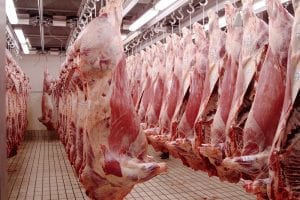The North American Meat Institute (NAMI) has provided data showing that the meat sector has proven to be successful in mitigating the impact of COVID-19. Infection rates of meat and poultry workers are reportedly 85 percent lower than the general population. Since May of last year, the meat sector has been able to reduce COVID cases by 98 percent within the industry. Screening measures, sanitation practices, and face coverings have all be instrumental in improving COVID numbers. Despite the positive momentum within the industry, NAMI notes there is still room to improve with increased vaccination for workers.
“Frontline meat and poultry workers were among the first impacted by the pandemic, but comprehensive protections implemented in the sector since spring 2020 work,” NAMI President and CEO Julie Anna Potts said in a press release. “The critical next step is to ensure immediate access to vaccines as this dedicated and diverse workforce continues feeding Americans and keeping our farm economy working.”
Information from the Food and Environment Reporting Network shows there were less than five new reported infections per 100,000 meat sector workers per day back in February. Figures show that number was approximately 26 per 100,000 individuals in the general population during the same period. Data from the University of Nebraska Medical Center demonstrates that safety measures such as masking and physical barriers helped significantly reduce infections. The study of meat facilities showed that 62 percent were able to reduce the infection rate through various safety protocols.
Vaccine eligibility is continuing to expand, and many states have opened eligibility to meat and poultry workers. As vaccine efforts continue rolling out nationwide, there has been some hesitancy within the industry. The U.S. Centers for Disease Control and Prevention (CDC) has been working with the meat sector in educating the workforce about the vaccine.











